Your cart is currently empty!
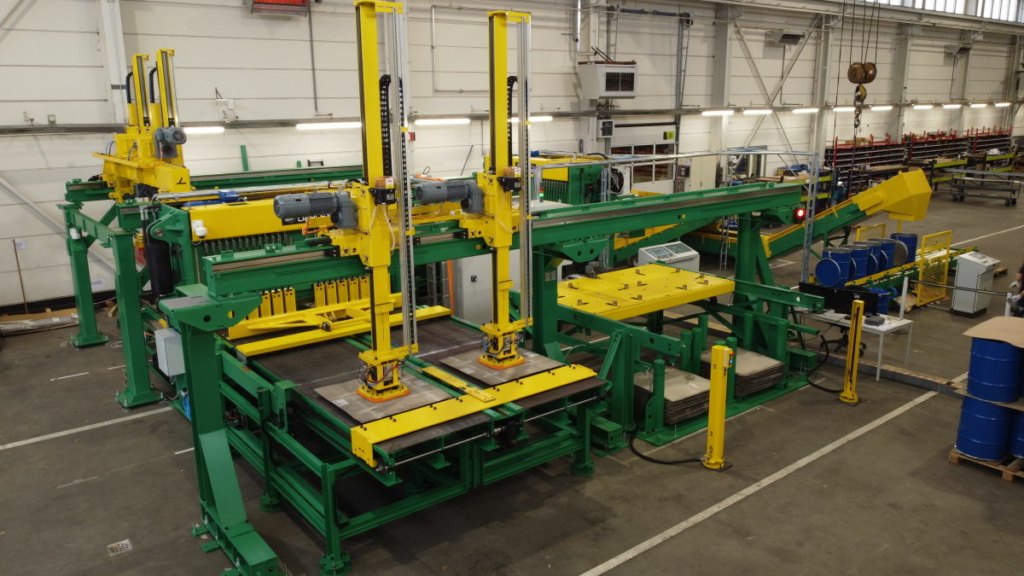
Fast control for sheet metal processing automation
SafanDarley has been building sheet metal processing machines for many years, using PLC systems that focus on robust industrial automation and reliable process control. However, the software engineers were curious about Beckhoff’s PC-based control system with fast Ethercat communication. They used it for an automated nickel cutting line and were impressed: reusable software objects for motion control, extensive expansion options and simplified wiring.
SafanDarley, formed from the merger of Safan and Darley, has a history of over ninety years in machine building for sheet metal processing. The company focuses on equipment for bending, cutting and handling sheet material, including press brakes and shears. Traditionally, the press brakes are hydraulically driven, but SafanDarley has also become a pioneer in servo-electric drive technology. This consumes less energy (and thus emits less CO2) and can operate without hydraulic oil.
In addition to individual machines, SafanDarley provides complete automation/robotization of bending cells and customized total solutions for processing lines. Headquarters in Lochem (150 employees) produces electrically controlled machines in series, while the heavier hydraulic machines and special projects are built in Eijsden (50 employees).
SafanDarley uses PLCs from a well-known brand for machine control, says Chris Utens, senior software engineer in Eijsden. “We didn’t have any experience with Beckhoff, but we were curious. They work PC-based and are the founders of the Ethercat protocol for fast, Ethernet-based communication, which allows for easy connections to various machines. Our machine control requires a lot of remote I/O, and this offers ample space for that.”
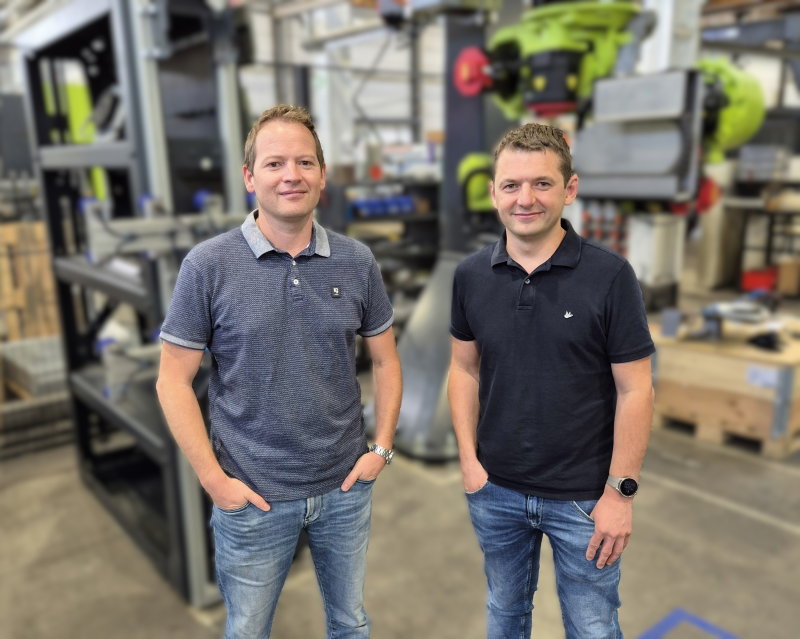
From scratch
In April of last year, Utens and his colleague, software engineer Jelle Adema, visited the Beckhoff stand at the Hannover Messe. “We were amazed by their presentation and became enthusiastic about their products and working methods.” So, they decided to approach the construction of an automated nickel cutting line for a customer in South Africa as a pilot project with Beckhoff. “We attended training sessions and got started, engineering the control from scratch: selecting hardware and programming software for PLC, safety and HMI.”
The line layout was shaped like a square, which is why SafanDarley opted for a star topology of the control network. Connections run from a central cabinet to decentralized electrical cabinets and Ethercat P islands on the various components of the line. All remote I/Os for axes, grippers, sensors and so on are controlled from such an island. Ethercat P combines communication and power in a single 4-wire Ethernet cable, whereas those signals are traditionally separated. Utens: “Only one cable is needed; that was an eye-opener for us. We had interns do part of the wiring. Ethercat P is a bit more expensive, but making the connections is very simple, which means there’s little room for error and the machine can be set up quickly.”
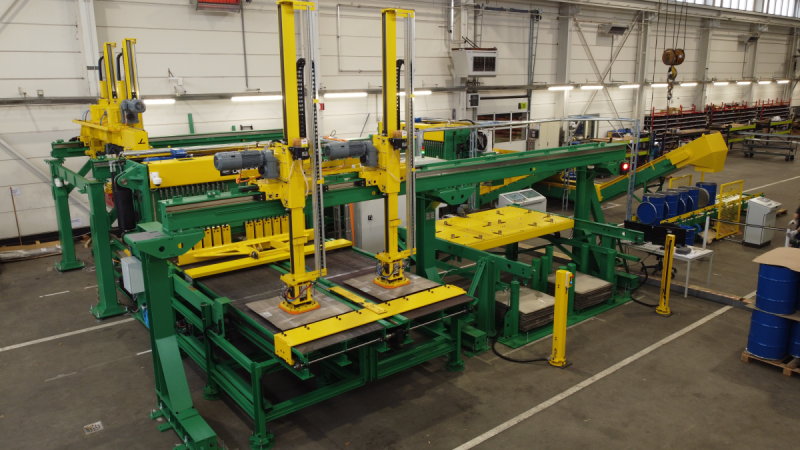
Cutting with care
The line starts with the infeed of so-called cathodes, nickel plates measuring 900 mm by 900 mm. They’re picked up with a pneumatic gripper, centered on a measuring table, precisely measured for length, width and thickness, weighed and then transported to the infeed table of a hydraulic shear. This shear is adjusted to ensure each cathode is cut correctly, in terms of cutting length, gap, angle and force. Adema: “The cathodes are never perfectly homogeneous, with curves, bumps and ears. This makes handling difficult and means the cutting settings must be adjusted to the specific shape and material of the plates and strips. From this, it can be determined, for example, whether the cathodes should be cut one by one or simultaneously as a pair.”
The cut strips are collected – a strip collector was specifically developed for this – and presented to a second shear, which cuts them into small blocks of 100 mm by 100 mm. The cut blocks are weighed before being filled into 250 or 500-kg drums, which are subsequently labeled with all the information. The product is then ready for sale, says Utens. “The nickel is used, for example, in the manufacture of car batteries or in the melting process for the production of certain metal alloys. Thus, the coarse product, plates resulting from an electrolysis process, is processed by our line into small blocks of nickel that are easily processed for industrial use.”
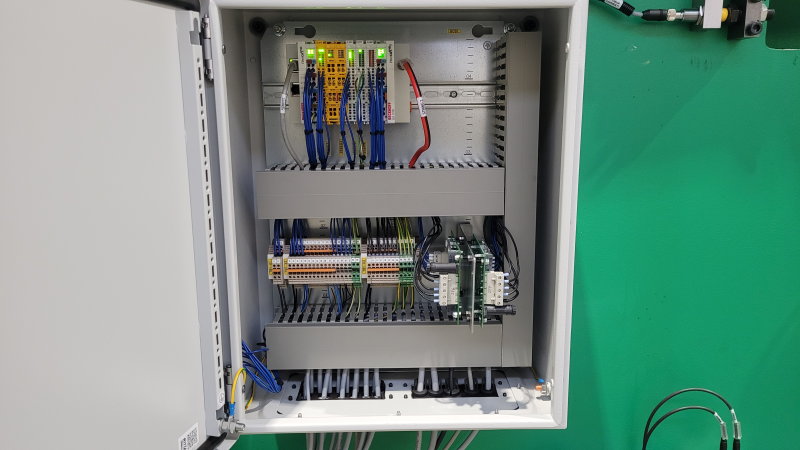
Object-oriented programming
The line had to be able to process two tons of nickel per hour and be operated by a single person. That’s where control – and therefore Beckhoff – came into play, explains Utens: “We developed an object-oriented framework, based on the PackML standard, for programming the control in Beckhoff’s Twincat environment. For each station in the line, such as shear, pick and place, and measuring table, we defined a software module as an object.” Subsequently, network configuration is quick and easy. When a PLC is switched on, it automatically reads in all connected Ethercat islands. Utens: “You no longer have to manually set up and configure the entire network.”
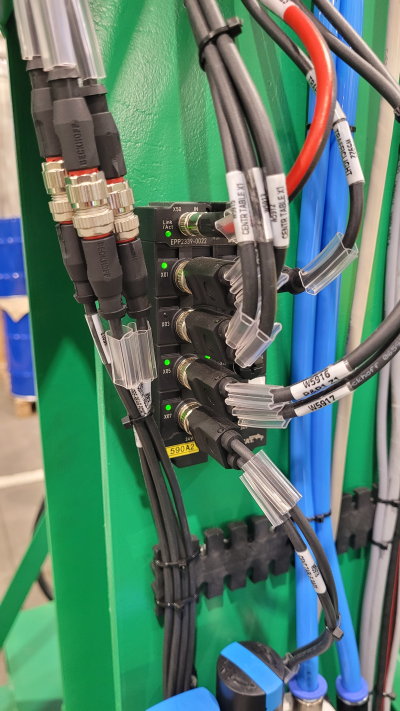
Gradually, the software engineers discovered the potential. Adema: “For example, the customer requested a specific type of drives. With our standard PLCs, connecting them to the control was a real hassle, but with Beckhoff, it became very easy. Writing settings to IO-Link modules and connecting Ethercat modules is very simple; there are many expansion modules and extensive diagnostic options.” This is thanks in part to the Ethercat Technology Group, where Beckhoff is making the protocol – the fastest fieldbus, they claim – available to OEMs, technology suppliers and end users so they can create their own expansions and connections.
Customized operation
Another interesting feature is that the operator’s HMI display can be customized, including custom buttons and an emergency stop. An online configurator allows users to select buttons, key switches and colors, among other things. The operator panel for the nickel cutting line contains the operating HMI along with live camera feeds from the line. A total of eight cameras have been installed to monitor critical points, such as the shears, the pick-and-place units, the infeed, the filling station and the measuring table. The HMI can be positioned freely; distances of up to fifty meters from the central cabinet are no problem.
The HMI is web-based, making it easy to transfer to a wireless tablet. This allows the operator to walk around the line, for example, to troubleshoot malfunctions while the control is in manual mode. Distributed safety is available for this purpose. If the main line is at a standstill in service mode, a partial safety module can be clicked onto the remote I/O box of, for example, a shear that requires manual control. A hold-to-run switch then allows safe operation and maintenance.
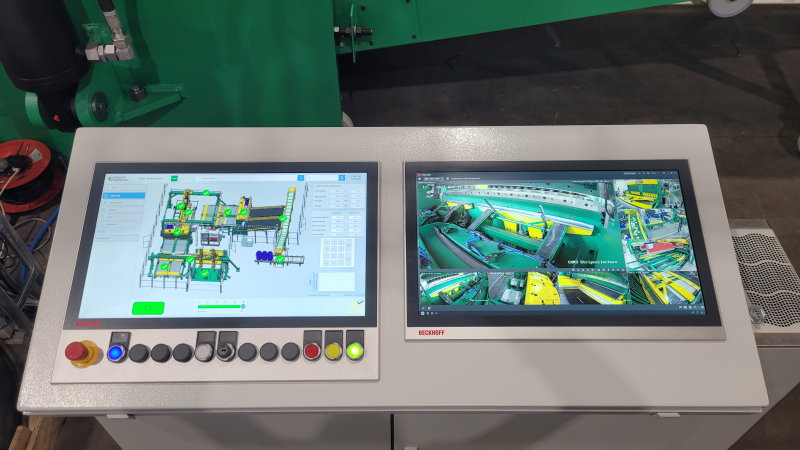
New standard?
The project progressed smoothly. This was partly due to the standard software blocks that proved very useful and the custom-created objects that were easily reusable, according to Utens. “We started in week 20 of 2024 and were able to deliver the complete line in week 50. It was an ambitious project – with 300 remote I/O units, fifteen servo axes and two heavy-duty hydraulic axes for the shears – and we were able to complete it on schedule. We anticipated needing a few days of on-site support from Beckhoff. But that wasn’t the case, although there were a few minor issues. We only had to contact their service department, which was very helpful. The factory acceptance test was successful in January, and preparations are now underway for the site acceptance test in South Africa.”
Will SafanDarley switch to Beckhoff completely based on the positive experiences? That discussion is currently underway, Utens concludes. “Any transition will certainly take years, because we’ve put a lot of software development into our current PLCs and would therefore have to rewrite all the functionality for the standard control.” Beckhoff recommends starting with just one aspect, such as PLC, safety or motion. “We’ve started a new project for a press brake with an automatic tool change station. The press brake runs on our standard PLC, but we’ll be controlling the rest of the automation with Beckhoff. That will be the new standard for our special projects.”
This article was written in close collaboration with Beckhoff.

